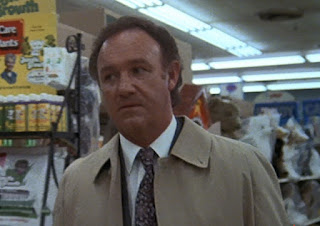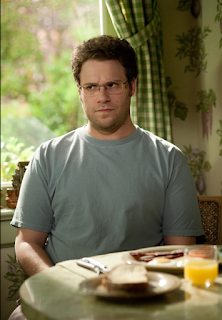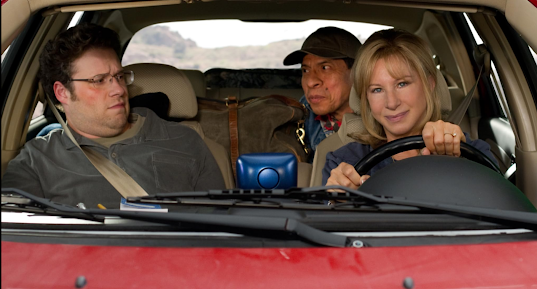There seem to be some unwritten rules when it comes to how TV and movies portray friendship. In slasher movies, friends are indistinguishable from bullies, competing to see who’s the bigger asshole until they’re beheaded by a chainsaw-wielding maniac. Male friendships are usually situational, and usually action-adventure related: a grizzled cop assigned a rookie/loose cannon partner, or two partners in crime out to make one last score. In either case, they’re too busy blowing shit up to get hung up on how much they mean to each other because #NoHomo.
 |
| Kurt Russell never knew he was the wind beneath Sly’s wings. |
In “chick flicks,” however, female friendships tend to go way back, sometimes as far back as elementary school, and last a lifetime, with no chainsaw-wielding maniac to put them out of their misery. The 1980s were (roughly) bookended by two such stories, 1981’s RICH AND FAMOUS and 1988’s BEACHES, both telling essentially the same story, though with significantly different results.
The friendship in Rich and Famous dates to the 1950s, when Liz Hamilton (Jacqueline Bisset), beautiful, studious and English, and Merry Noel Blake (Candice Bergen), beautiful, shallow and Southern, were roommates at Smith College. Merry elopes with Doug (David Selby), moving to California and becoming a well-off stay-at-home mom. Liz, on the other hand, becomes an Important Writer, her first novel garnering acclaim among the intelligentsia who clamor for a second book that Liz can’t seem to finish.
But Merry hasn’t been spending all her time cleaning her beachside house in Malibu and raising her daughter Debby. When she and Liz reconnect in 1969, Merry sheepishly reveals she’s written a roman à clef based on her famous neighbors, one of whom has “become far too familiar with drugs, some of which he puts up his nose!”
 |
| Merry and Doug have an unsatisfying night. |
Merry then proceeds to read the manuscript to her. It’s clear Liz is not impressed, and a little angry that her friend—not a real writer—is encroaching on her territory (and possibly pissed she’s been kept up all night by Merry’s reading). However, though Liz makes a lot of oblique jabs, she refrains from explicitly criticizing Merry’s book, leaving Merry to believe she liked her novel. Merry urges Liz to show the manuscript to her publisher and though Liz resists at first, she ultimately does, assuming her publisher is too high-minded to even entertain buying it.
You pretty much know what happens next. By 1975, Merry has become a wildly successful—and very prolific—author of trash fiction in the tradition of Jacqueline Susann or Judith Krantz (though she has more in common with Jackie Collins as a talk show personality). This is also the point where Rich and Famous becomes two different films. Merry charges through the rest of the movie like a neurotic Prime Time soap villain, swaddled in fur coats and her hair perfectly coiffed, getting into arguments with whomever is in her path: with her husband, who leaves her; with her teenage daughter Debby (Meg Ryan in her film debut), who leaves her; and, crucially, with Liz.
 |
| Merry is impervious to Doug’s threats. |
If Bergen acts as if she’s in Valley of the Dolls, or possibly 101 Dalmatians, Bisset, who co-produced (though only her production company Jacquet is credited), acts as if she’s in The Turning Point, giving a grounded performance as she glides gracefully through her scenes looking fabulous in silk blouses and pencil skirts, but also looking the same no matter what decade she’s supposed to be in (Bergen’s fashions may be outrageous, but at least they suggest the passage of time, whereas Bisset spends the entire movie stuck in 1978).
 |
| Liz joins the mile high club with widower Max (an uncredited Michael Brandon). Spoiler: Max’s wife is very much alive. |
 |
| Matt Lattanzi and Jacqueline Bisset audition for their 1983 movies My Tutor and Class. |
I first thought the
movie was trying to emphasize how Liz is a sexually liberated woman, in
contrast to Merry who, despite writing a lot about sex, is a puritan at heart.
In one of Liz and Merry’s many arguments, Liz asks Merry just how many men one must fuck
to qualify as a slut. “Three!” Merry snaps. But ascribing a deeper meaning to Liz’s
dalliances is giving Rich and Famous too much credit. Liz is down to
fuck because how long are people going to sit for her discussing T.S. Eliot
and D.H. Lawrence with Hart Bochner?
 |
| Merry and Liz have yet another fight. |
Rich and Famous is a remake of the 1943 film Old Acquaintance, starring Bette Davis and Miriam Hopkins, though George Ayres’ screenplay has more in common with a Sidney Sheldon novel than the original John Van Druten play. The movie is capably helmed by Golden Age Hollywood director George Cukor, but even he can’t elevate the film. Rich and Famous is just trash.
 |
| Jacqueline Bisset and Candice Bergen toast making it to the end of Rich and Famous. |
But while being trash makes Rich and Famous an unfortunate final bow for Cukor, who died in 1983 at age 83, it’s for that very reason it’s worth checking out. Merry would be insufferable in real life, but Bergen’s portrayal of her livens up the film considerably. When I saw this movie in 1981, I’d only known Bergen as The Golden Turkey Awards’ nominee for the Lifetime Achievement Award – Worst Actress. The nomination was unfair, it turned out (Raquel Welch was the “winner,” which I also disagree with). I’ll concede that Bergen can be a bit wooden in dramatic roles, but fortunately the role of Merry allows Bergen to showcase her flair for comedy. While her Southern accent is better suited for an SNL sketch than a serious movie, I can overlook that when Bergen’s delivering such lines as “We all have these little bits in our pants, that doesn’t mean we have to pick at them all the time,” and “If you get to thinking about boys too much, just get on the back of a horse.” You’ll never buy that these two women would still exchange Christmas cards two years after leaving college, let alone maintain a close friendship for more than two decades, but Bergen’s over-the-top performance makes Rich and Famous worth watching.
From Trash
to Schmaltz
Rich and Famous was a commercial
failure when it was released in 1981, but that didn’t stop Disney’s Touchstone Pictures
from peddling the same story seven years later when it released Beaches
in 1988.
Though the two
films have the shared theme of an enduring friendship forged between opposites,
they do have some key differences. The friends in Rich and Famous are on
a level playing field, both being attractive, privileged women (Merry might be
the rich one, but apparently there is considerable cash to be made writing
magazine think pieces, judging by Liz’s a picturesque riverside farmhouse in
Connecticut). In Beaches, the friendship is between the tough-talking, working-class
C.C. Bloom (Bette Midler) and the conventionally attractive, wealthy WASP Hillary
(Barbara Hershey). In Rich and Famous, Liz and Merry are in competition with each other in the world of publishing, whereas in Beaches C.C.
is an entertainer and Hillary is an attorney. The biggest difference of all: Rich
and Famous ends with a gay panic joke; Beaches ends with the death
of one of its main characters. I would apologize for the spoiler, but the movie
pretty much gives it away in the first 10 minutes, when C.C.’s concert
rehearsal at the Hollywood Bowl is interrupted with the news that Hillary is in
the hospital.
 |
| Before she was Blossom or annoying, Mayim Bialik killed it as Lil’ C.C. in Beaches. |
Beaches’ central friendship also begins in the late 1950s, when a lost 11-year-old Hillary, played by Marcie Leeds, vacationing in Atlantic City with her family, meets 11-year-old C.C., played by Miyam “Ask me about my Ph.D. in neuroscience!” Bialik (in fairness, while Bialik is kind of annoying today, she is pretty great in this early role). Hillary is fascinated by this brash girl she meets under the Boardwalk, and C.C. is eager to please her new fan. Even though the girls live on different coasts, they maintain their friendship through frequent letters (the Iris Rainer-Dart novel on which Beaches is based tells much of its story through the main characters’ letters).
 |
| Too bad he’s not a furry: John Pierce (John Heard) is more into Hillary at first meeting. |
Their friendship is tested in adulthood, especially whenever the two women are in the same room together. They’re all squeals and hugs in the late 1960s, when they share a cramped New York walk-up, C.C. singing in dive bars and delivering/performing singing telegrams and Hillary working for the ACLU. Their friendship becomes strained, however, when they fall for the same man, theater director John Pierce (the late John Heard).
 |
| She’ll cut a bitch. |
 |
| Not pictured: Barbara Hershey and Bette Midler |
The film settles into a pattern: C.C. and Hillary reunite, resume their friendship, then fight/separate abruptly. Along the way the women marry—C.C. to John; Hillary to Michael Essex (James Read), a snooty attorney who is most definitely not a fan of his wife’s tacky friend—only to get divorced a few years later. C.C. finally achieves her dream of stardom, her bawdy musical revue making her the toast of Broadway in the early 1970s, but near the decade’s end she’s hoping recording a disco album will revive her flagging career (Beaches none too subtly mimics the ups and downs of Midler’s own career). Disco can wait, though, C.C. deciding to stick around in San Francisco to help Hillary through her pregnancy (a parting gift from Michael). Things take a ridiculous turn when C.C. begins dating Hillary’s OB/GYN (the late Spalding Gray), uncharacteristically considering abandoning show business to become his wife. That is, until she gets a call from her agent about a part in a play that’s perfect for her. She abruptly leaves for New York—and leaves Hillary to break the bad news to her doctor. “He’d take it coming from you,” C.C. says. “He’s your gynecologist!”
 |
| Hillary questions C.C.’s choices, but not that hair. |
Hillary returns to
practicing law, balancing her career and motherhood (easier to do when you’re
already rich). But then she’s diagnosed with viral cardiomyopathy, a condition
that, though fatal, ensures Hillary will remain looking lovely on her way out.
Cue “Wind Beneath My Wings.”
 |
| It’s titled Beaches for a reason. |
 |
| The Divine Miss M adds one more ballad to Beaches’ bestselling soundtrack. |
Though novelist Rainer-Dart
reportedly had Cher in mind when she conceived the character of C.C. (Cee Cee
in the book), the role is tailor made for Midler. The role not only shows
off Midler’s strengths as an entertainer, but it also provides her an opportunity to recycle
re-introduce past material, as she does when C.C. performs the ditty “Otto
Titsling,” originally featured on her 1985 comedy album Mud
will be Flung Tonight. Hershey is good, too, counterbalancing Midler’s flamboyance
with a relatively restrained performance, but really, the part of Hillary could just as
well be credited as The Other One (Hershey got more publicity for getting collagen
lip injections for the film than she did for her performance
in it). This is Bette’s show.
Beaches was a box office hit when it was released in 1988, solidifying Midler’s status as a movie star. Its soundtrack was an even bigger hit, reviving Midler’s then dormant singing career. I love Midler, so much that I saw Jinxed! during its theatrical run and liked it (c’mon, she’s done much, much worse). Yet even though it’s one of Midler’s better movies, Beaches is not a favorite. Director Garry Marshall adeptly balances the comedy and drama, but the laughs are mild—I laughed harder and more often watching Rich and Famous—and the drama hollow. Marshall’s roots in TV sit-coms are quite apparent, the result being that Beaches has more in common with A Very Special Episode than a big screen dramedy, with all the edges sanded down for a wide audience. This reputed weepie failed to jerk a single tear from my eyes, probably because I’m dead inside, but I also blame it on the fact that many of Beaches’ emotional beats feel manipulative. Rich and Famous may be trash, but Beaches is schmaltz.
Another reason I’m
not a huge fan of Beaches has nothing to do with the movie itself but
what it represents. It’s the demarcation line in Midler’s career when she went
from being that raucous performer adored by your gay uncle to that sappy
balladeer your mom likes (mitigating factor: by 1988, your gay uncle was probably
dead). Instead of growing Midler settled. While there have been high points along the way, she spent the majority of her post-Beaches career making saccharine dramedies (Stella;
For the Boys) and comedies of varying (some would say diminishing) quality, the best of which being
her 1996 hit The First Wives Club, though even that movie falls short of
its potential, Olivia Goldsmith’s novel being transformed from dark revenge fantasy to
frothy—and toothless—romp. The Divine Miss M persona Midler had crafted throughout
the ’70s only got trotted out for unsuspecting moms during live performances. Consequently, millennials
likely only know her as the singer of “Wind Beneath My Wings” and star of Hocus Pocus. For Gen Z, she’s just
another boomer celebrity tweeting
herself into hot water.
Beaches may be the more successful ’80s movie about female friendship, but it’s the ’70s-style trashiness of Rich
and Famous that I always return to. Love the Beaches soundtrack,
though.
 |
| Candice Bergen and Bette Midler have each starred in
more recent movies about life-long friendships among women, now a staple in the SCAPT subgenre. Book Club was enjoyable, but its sequel, Book Club: The Next Chapter, was fucking painful. I haven’t seen The Fabulous Four yet, but the reviews have not been glowing. |




























